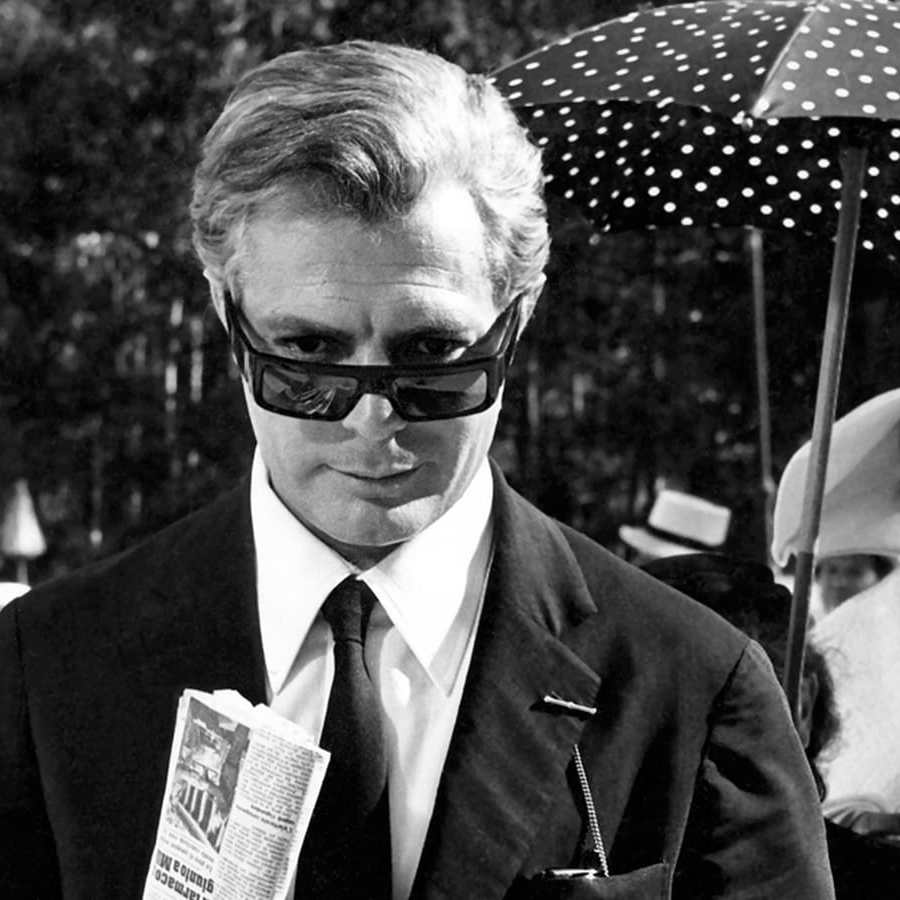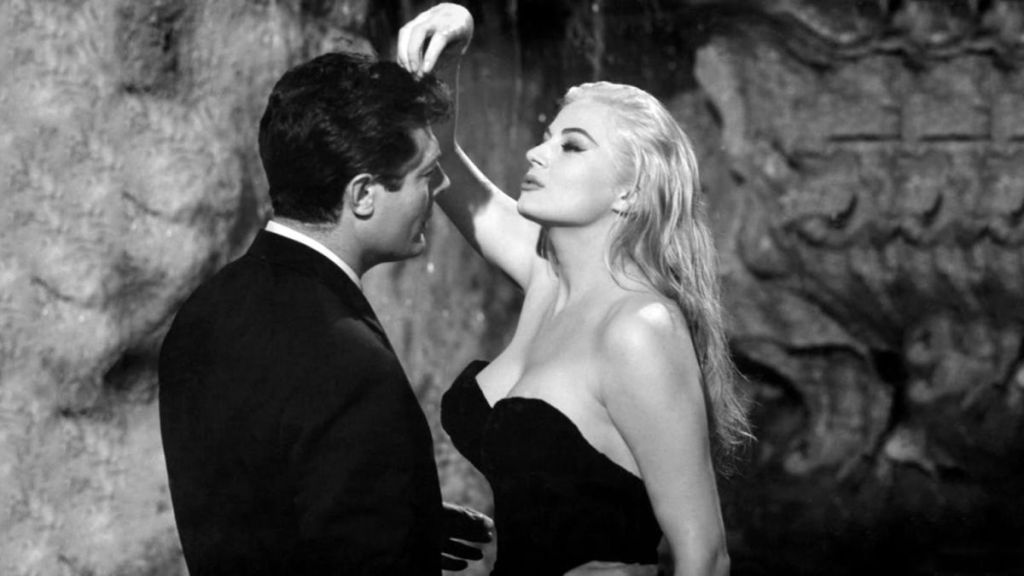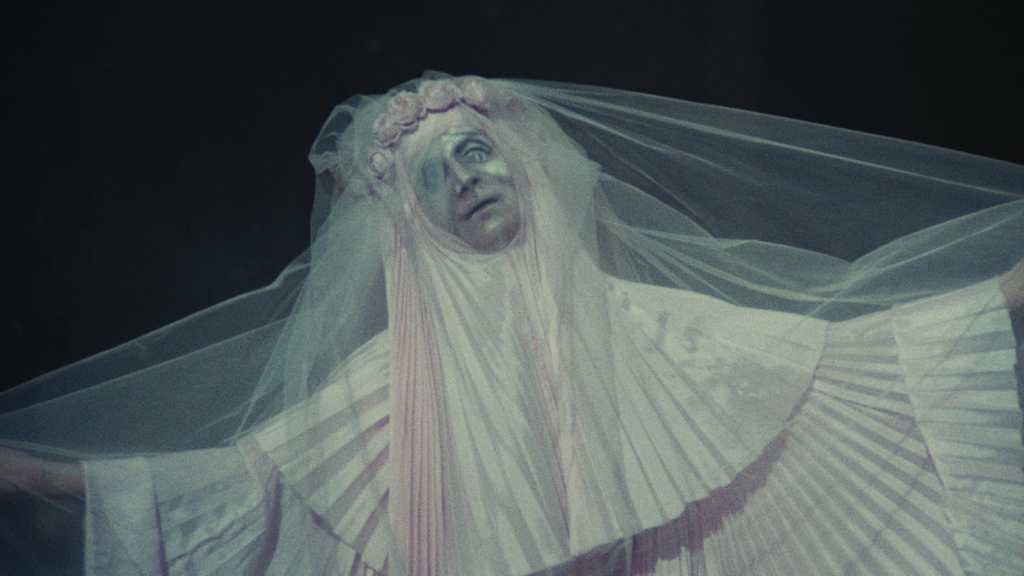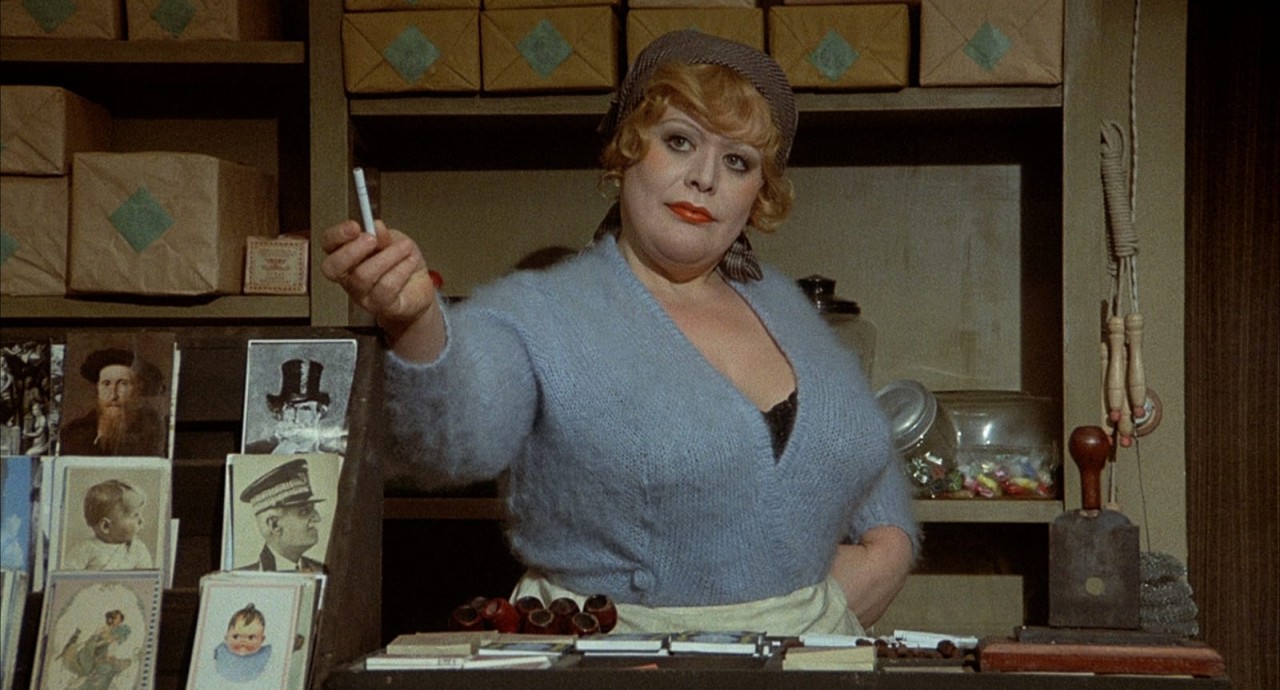Federico Fellini is an iconic Italian filmmaker recognised globally for his revolutionary influence on the cinematic art form. His cinematic repertoire blends reality and fantasy to craft a unique cinematic language, distinct for its surrealist elements, rich visual style, and profound exploration of personal and societal themes. His diverse body of work, including classics like La Dolce Vita, 8 1/2, and Amarcord, encapsulates his signature style and his dedication to challenging and expanding the boundaries of traditional filmmaking.
Starting his career in the Italian neorealist movement of the 1940s, Fellini transitioned into writing screenplays before establishing himself as a leading director. His directorial debut, Variety Lights, was met with critical acclaim, marking the start of a career filled with an eclectic mix of films, each imbued with his distinctive creative vision. His early experiences and personal introspections deeply informed his cinematic creations, adding authenticity and self-reflection to his storytelling.
The thematic landscape of Fellini’s work is deeply varied, often exploring human eccentricities, societal norms, and the interplay between reality and illusion. Films such as La Strada and Nights of Cabiria offer glimpses into the lives of society’s outcasts, shedding light on their hardships and dreams. In La Dolce Vita, Fellini critiques the hedonistic lifestyle of Rome’s elite through a satirical lens, revealing the hollowness of their existence. His exploration of the artist’s struggle, identity, and self-discovery is masterfully showcased in 8 1/2, wherein the protagonist, much like Fellini himself, grapples with creative block and the anxieties of filmmaking.
Visually, Fellini’s films are stunning works of art. Employing long takes, elaborate tracking shots, and intricate compositions, he immerses viewers in a rich and fantastical world. The extravagant sets and costumes of Satyricon or Casanova exhibit his keen eye for detail and ability to transform the cinematic space into a dreamscape. This visual flamboyance is balanced by his knack for caricaturing characters, often exaggerating their idiosyncrasies to make profound statements about human nature and society at large.
Fellini’s filmmaking also deeply resonated with his sound design and music. His collaboration with composer Nino Rota resulted in iconic scores that enhanced the atmosphere and mood of his films, adding depth to the storytelling. The use of ambient noises and subtle auditory details further enriched the cinematic experience, as evident in films like Amarcord and Juliet of the Spirits.
Fellini’s profound influence on cinema is undisputed. His work has inspired generations of filmmakers worldwide, including renowned directors like Martin Scorsese, David Lynch, and Pedro Almodóvar. His blending of realism and surrealism, visual artistry, and thematic exploration of the human condition has greatly shaped the cinematic landscape, making him a pillar of global film history.

Federico Fellini (1920 – 1993)
Calculated Films:
- I Vitelloni (1953)
- La Strada (1954)
- Nights of Cabiria (1957)
- La Dolce Vita (1960)
- 8 1/2 (1963)
- Juliet of the Spirits (1965)
- Roma (1972)
- Amarcord (1973)
- Orchestra Rehearsal (1978)
- And The Ship Sail On (1983)
Similar Filmmakers



Federico Fellini’s Top 10 Films Ranked
1. 8 1/2 (1963)
Genre: Psychological Drama, Surrealism

2. La Dolce Vita (1960)
Genre: Drama, Satire

3. Nights of Cabiria (1957)
Genre: Drama, Comedy

4. La Strada (1954)
Genre: Road Movie, Drama, Melodrama

5. Amarcord (1973)
Genre: Comedy, Coming-of-Age, Drama, Slice of Life

6. I Vitelloni (1953)
Genre: Drama, Slice of Life

7. Juliet of the Spirits (1965)
Genre: Surrealism, Psychological Drama

8. Roma (1972)
Genre: Satire, Surrealism, Comedy

9. And The Ship Sails On (1983)
Genre: Comedy, Drama, Satire

10. Fellini’s Casanova (1976)
Genre: Biographical, Period Drama, Surrealism

Federico Fellini: From Roma with Fantasia
Born on January 20, 1920, in the Adriatic coastal town of Rimini, Federico Fellini was destined to reshape the boundaries of Italian cinema. But, like the meandering plotlines of his future films, Fellini’s early life was a tableau of seemingly unconnected experiences that, in retrospect, form a cohesive narrative.
From a young age, Fellini was enthralled with the world of arts, drawing, and storytelling. As if prefiguring his later films’ carnivalesque sensibilities, he was deeply fascinated by circus performers, vaudeville shows, and itinerant players who populated his hometown. These figures, so peripheral to many, took centre stage in the imagination of the young Fellini and would later resurface in masterpieces like La Strada and 8½. However, like many great artists, his family viewed Fellini’s passion with scepticism. The bourgeois sensibilities of his parents, particularly his father – a travelling salesman – and his mother – a homemaker – favoured a more stable profession.
During the tumultuous years of his adolescence, Italy was under the iron grip of Benito Mussolini’s Fascist regime. Like a generation of lost Italians, Fellini’s wartime experiences changed him.
Upon moving to Rome in 1939, Fellini’s foray into film began. Ironically, while he was initially disinterested in cinema during his youth (preferring the immediate thrill of the circus and theatre), Rome’s allure and the burgeoning Italian film industry ignited a newfound passion. His journey began not with directing but with scriptwriting.
Collaborating with Roberto Rossellini, Fellini co-wrote the seminal film Rome, Open City. This masterpiece, imbued with Italian Neorealism’s raw and gritty texture, was a stark departure from the escapist films of the Fascist era. Instead of glossed-over fantasies, Neorealists depicted the harsh realities of everyday Italians – a theme Fellini would later adopt, modify, and make his own.
Fellini’s directorial debut, Variety Lights, co-directed with Alberto Lattuada, foreshadowed the motifs and themes dominating his later works. A tale of a travelling theatre company, the film interspersed humour with poignant human drama. But it was his subsequent solo-directed films, such as The White Sheik, where one can truly see Fellini starting to break free from the Neorealist tradition. Whereas Neorealism was about the Italian streets, Fellini was more intrigued by the dreams, fantasies, and illusions of the individuals walking those streets.
However, with I Vitelloni, Fellini truly announced himself as a singular voice in cinema. Translated as “The Loafers,” the film delves into the lives of five young men in a provincial Italian town, offering a bittersweet critique of societal inertia and the pains of youthful aimlessness. In many ways, I Vitelloni can be seen as a reflection of Fellini’s own youth in Rimini, blurring the lines between personal experience and artistic representation.
As the 1950s progressed, Fellini continued to solidify his place as one of Italy’s most innovative and formidable directors. His next venture, La Strada, marked both a zenith in his career and the beginning of his movement away from strict Neorealism. The film is a tragic tale of Gelsomina, a naïve girl sold to a brutish strongman named Zampanò. It was a deeply symbolic story, capturing life’s beauty, brutality, and existential angst.
During this period, Fellini’s collaboration with the actress Giulietta Masina, his wife, produced some of cinema’s most heart-wrenching performances. In Nights of Cabiria, Masina’s portrayal of a wide-eyed yet resilient prostitute searching for love in the streets of Rome captured the imaginations and hearts of viewers globally. Like its predecessor, the film utilised Neorealist elements but blended them with Fellini’s growing interest in individual psychologies and dreamlike sequences.
However, it was with La Dolce Vita that Fellini truly shattered the vestiges of Neorealism. The film, a sprawling narrative following Marcello Rubini, a journalist meandering through the hedonistic and superficial world of Rome’s elite, became an instant cultural phenomenon. Its episodic structure, reflecting the seven deadly sins, and the iconic imagery, most notably the Trevi Fountain scene with Anita Ekberg, made it a watershed moment in film history. Yet, the film’s reception was polarised. While many lauded Fellini’s audacious critique of modern decadence, the Vatican condemned it for its perceived amorality. Still, its international success was undeniable. “Felliniesque” had now become a term, signifying a blend of the fantastical and the real, of satire and deep sentiment.
With success came introspection. Fellini, now a celebrated director, found himself at the crossroads of artistic exploration. His growing interest in Jungian psychology began to deeply influence his work, evident in his portrayal of dreams, the subconscious, and archetypal symbols.
With the weight of expectation, Fellini faced an artist’s nightmare: writer’s block. The pressure to surpass La Dolce Vita’s success and continually reinvent his cinematic language was immense. This personal and creative crisis became the genesis for one of his most self-reflective and groundbreaking films, 8½.
8½, named for the number of films Fellini had directed by that point, was a unique movie pushing cinema in a new direction. The film’s protagonist, Guido Anselmi, a renowned film director, struggles to find inspiration for his next project. A whirlwind of memories, dream sequences, and existential confrontations ensues. Fellini, through Guido, delves deep into his own fears, desires, and creative blocks. The film’s non-linear narrative structure, a tapestry of past, present, and fantasy, became a masterclass in storytelling.
The late 1960s and 1970s witnessed Fellini delving even deeper into the realms of the mystical and the otherworldly. His fascination with the supernatural grew from an academic interest in Jungian psychology to a more hands-on exploration of parapsychology, spiritism, and séances. This was a time of global countercultural movements, and Fellini didn’t remain untouched. Reportedly, he even experimented with LSD, a decision driven more by curiosity than recreational intent.
Juliet of the Spirits was Fellini’s response to the shifting gender dynamics of the time. While 8½ was a journey into the male psyche, this film, starring his wife Giulietta Masina, explored the internal world of a woman grappling with her husband’s infidelity. Here, Fellini seamlessly blended the reality of a marriage crisis with the spectral, as the protagonist is guided by spirits from her past. The colour palette, vibrant and otherworldly, marked a departure from his earlier works, offering audiences a visual treat.
With Satyricon, Fellini leapt further from conventional storytelling. Adapted from Petronius’s ancient Roman novel, the film is less a historical account and more a phantasmagoric journey into a forgotten era. Its episodic narrative, laden with surrealism, evoked both wonder and confusion, but there was no denying the audacity of Fellini’s vision.
Roma was Fellini’s kaleidoscopic love letter to the city that had given him so much. More a series of vignettes than a linear story, the film beautifully juxtaposed ancient Rome with its modern counterpart. Fellini was the poet, chronicler, and critic all at once.
1973’s Amarcord, perhaps one of his most accessible late films, was a semi-autobiographical reminiscence of his childhood in Rimini. Translated as “I Remember,” the film, punctuated with Fellini’s signature humour and warmth, was a nostalgic reverie, earning him his fourth Academy Award for Best Foreign Film.
His later works, including And the Ship Sails On, continued his tradition of blending realism with dream-like sequences. Set on a ship filled with Europe’s elite, the film is both a satire and an elegy, reflecting on the end of an era and the inevitable march of time.
Fellini’s journey came to an end on October 31, 1993. But as with artists of his calibre, death was merely a transition. His legacy was immortal.
The echoes of Fellini’s cinematic language can be found in the works of many contemporary filmmakers. Tim Burton‘s gothic, dreamlike aesthetics, often centred around misfits and outsiders, resonate with Fellini’s celebration of the carnivalesque and the marginal. David Lynch, with his unique brand of surrealism, has often been seen as a spiritual successor to Fellini. The dream sequences, the blurring lines between reality and illusion in Lynch’s works, are reminiscent of Fellini’s narratives.
But the influence isn’t limited to the West. Polish director Wojciech Has‘s labyrinthine tales, like The Saragossa Manuscript, share Fellini’s love for the episodic and the bizarre, and Emir Kusturica‘s films owe a debt to the Italian maestro with their chaotic blend of humour, tragedy, and the surreal.
Beyond cinema, his influence permeates literature, art, and even popular culture. His term “paparazzo,” from La Dolce Vita, has become synonymous with celebrity photographers. But, more importantly, he redefined what cinema could be. It wasn’t just about linear stories or stark realities; it could be a canvas for dreams, memories, and the mind’s deepest recesses.
Most Underrated Film
And the Ship Sails On often sails under the radar in discussions of Federico Fellini’s best films, overshadowed by the usual suspects. Yet, there’s really no great reason why it isn’t spoken about in favoured tones; it’s not small in scope, it’s not lacking in ambition, and it’s entertaining. It often seems like discussions on Fellini stop with Amarcord, but his remaining decades were filled with monumental works.
Set in 1914 aboard a luxurious cruise ship, the film revolves around the death and subsequent funeral journey of a world-famous opera singer. True to Fellini’s style, the boat becomes a microcosm of society, filled with eccentric characters from Europe’s cultural elite. The film revels in its artifice: a mechanical sea, painted backdrops, and an opera performed for ostriches and rhinos, all of which highlight Fellini’s commentary on the superficiality and decadence of the time.
One common criticism was its lack of a central narrative thrust, making it feel disjointed to some viewers. The episodic nature, which had worked in Fellini’s favour in films like La Dolce Vita, became a point of contention here.
The film is a perfect example of a Fellinesque film. Here, we see Fellini’s dealings with reality and surrealism, and the set design’s artificiality echoes Satyricon and Roma‘s constructed worlds. It’s not Fellini’s best film but should be cherished for its perfect Felliniesque indulgences.
Federico Fellini: Themes and Style
Themes:
- The Circus and the Carnival: Fellini’s early life in Rimini, surrounded by travelling performers and circus acts, deeply influenced his cinematic themes. The idea of life as a carnival, filled with strange, delightful, and sometimes grotesque events, recurs throughout his films.
- Autobiographical Elements: Many of Fellini’s works, such as 8½ and Amarcord, reflect his own experiences, desires, and anxieties.
- The Clash of Old vs. New: Fellini often depicted the tension between tradition and modernity, especially in films like La Dolce Vita, where the ancient city of Rome contrasts with its modern, hedonistic counterparts.
- Spirituality and Religion: Having grown up in Catholic Italy, Fellini frequently addressed religious themes, often mixing reverence with scepticism.
- Femininity and Women: Fellini’s films often feature strong, complex female characters, reflecting both his adoration and fear of femininity.
- Dreams and the Subconscious: Influenced by Carl Jung, Fellini saw dreams as the bridge between personal experiences and universal truths. This is evident in films like Juliet of the Spirits.
Styles:
- Blurring Reality and Fantasy: Fellini loved intertwining the real with the surreal, creating dreamlike sequences that challenge the viewer’s perception of reality.
- Episodic Structure: Many of his films, rather than following a linear narrative, are composed of loosely connected episodes or vignettes.
- Rich Visual Language: From the grotesque to the sublime, Fellini’s films are visually opulent, using elaborate sets, costumes, and makeup.
- Collaborative Efforts: Fellini frequently collaborated with the same group of professionals, including composer Nino Rota, whose music became synonymous with his films.
Directorial Signature:
- The “Felliniesque”: This term has come to describe any work that mimics Fellini’s unique blend of the fantastical with the real. His films often depict bizarre characters, dreamlike sequences, and a mix of satire and sentiment.
- Character Close-Ups: Fellini had a penchant for tight close-ups of his characters, especially during pivotal emotional moments, making viewers feel intimately connected.
- Rich Soundscapes: Beyond just dialogue and music, Fellini paid close attention to the ambient sounds in his films, creating an immersive experience.
- Meta-cinema: Fellini often made films about filmmaking, incorporating his personal struggles and insights into the cinematic process, as seen in 8½.
- Fluid Camera Movement: Fellini was known for his fluid, roaming camera movements.
Further Reading
Books:
- Fellini on Fellini by Federico Fellini – An autobiography offering a personal insight into the filmmaker’s thoughts and processes.
- I, Fellini by Charlotte Chandler – A collection of interviews with Fellini.
- Fellini: The Sixties by Manoah Bowman – A visual dive into Fellini’s works during the 1960s.
- Federico Fellini: His Life and Work by Tullio Kezich – An authoritative biography on the director.
Articles and Essays:
- A Hundred Years of Fellini by Anthony Lane, The New Yorker
- The Many Faces of Federico Fellini by Phillip Kemp, Sight and Sound
- Il Maestro by Martin Scorsese, Harper’s Magazine
- Federico Fellini: Wizard of Film by Eugene Walter, The Atlantic
- Fellini, Federico by Antonia Shanahan, Senses of Cinema
Documentaries:
- Fellini: I’m a Born Liar (2002) – A documentary offering insights into Fellini’s life and creative process.
- How Strange to Be Named Federico (2013), directed by Ettore Scola
Federico Fellini: The 16th Greatest Director




